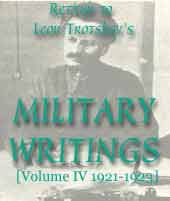
Today, October 25, at 4p.m., the troops of the Far Eastern Republic, which form an inseparable part of the Workers’ and Peasants’ Red Army, entered Vladivostok, which had been cleared of the Japanese and White-Guard occupying forces. Russia has recovered her outlet to the Pacific Ocean.
I congratulate the Red Army and the Red Navy! Glory to the workers, peasants and fighting men of our Far East! [1]
1. The situation in the Maritime Region after the defeat of Kolchak and the evacuation of foreign troops from Siberia was briefly as follows:
In the spring of 1920, Red guerrillas occupied nearly all the territory of Russia’s Far East, with the exception of Transbaikalia, where fighting against Semyonov continued. A Maritime Government was formed in the Maritime Region. During the night of April 4-5, 1920 [2], the Japanese, who did not want to let the Maritime Region escape from their clutches, seized simultaneously Vladivostok, Khabarovsk and a number of other places. After this, they presented the Maritime Government with an ultimatum demanding the removal of the Russian troops who had been captured by the Japanese, and the establishment of a 30-verst-wide neutral zone between the Japanese and Russian forces. In November 1920 a conference of regional governments, held at Chita, resolved to form, on the entire territory of the Far East, including Vladivostok, a Far-Eastern Republic organised on democratic principles. In February 1921 a Constituent Assembly was convened, and elected a government for the Far Eastern Republic. Meanwhile Japan con-tinued to support the Russian White Guards of Semyonov, Rappel, etc. At the end of May 1921 a government headed by Merkulov was formed at Vladivostok with the backing of the Japanese. In July 1921 Japan invited the FER to enter into peace negotiations. At a conference held at Dairen [3] in August 1921 Japan presented the FER with seventeen quite impracticable demands, which were rejected by the delegates of the FER. The negotiations dragged on for a very long time. The Washington Conference forced the Japanese delegation to make a few concessions at the outset, but, after the Washington Conference ended, the Japanese put forward a number of fresh demands concerning matters on which agreement had already been reached, and refused to give a deadline for the withdrawal of Japanese troops from the Maritime Region. On April 16, 1922 the peace negotiations were broken off. In a note dated July 19 the Japanese Government expressed its willingness to resume negotiations and to withdraw its forces from the Maritime Region not later than November 1. The conference opened at Changchun, with Soviet Russia participating, on September 4, 1922. At Changchun Japan refused to agree to a demand to evacuate the northern part of Sakhalin, and the negotiations were again broken off. The failure of the Changchun Conference strengthened the movement in Japan itself in favour of evacuating the Far East. The Japanese Ministry of Foreign Affairs issued a statement that evacuation would be completed before the end of October, despite the break-down in the peace talks. However, the Japanese army command was slow to carry out the order to withdraw. In mid-October troops of the People’s Revolutionary Army, led by Comrade Uborevich [4], routed the White-Guard army of Dieterichs and occupied Okeanskaya station. On October 19, the People’s Revolutionary Army encountered Japanese troops, nine versts from Vladivostok. Comrade Uborevich proposed to the Japanese commander that they negotiate an organised surrender of the town. In reply, the Japanese commander, threatening to resume military operations, obliged the People’s Revolutionary Army to fall back to Ugolnaya Station. At the same time, the Japanese Ministry of Foreign Affairs threatened that if the People’s Revolutionary Army resumed their advance, the evacuation of Japanese troops would be halted. Meanwhile, in Vladivostok, the Whites were plun-dering the town and carrying off valuable property to overseas ports and into Manchuria. Comrade Chicherin and Comrade Yanson, the FER’s Minister of Foreign Affairs, sent a protest about this to the Japanese Government. On October 25 Japanese forces left Vladivostok and troops of the FER entered the town. (See maps No.2 and No.6).
2. The events of April 1920 in the Far East are described in H.K. Norton’s The Far Eastern Republic of Siberia (1923) pp.111-118. This book contains, as appendices, the Declaration of Independence and the Constitution of the FER.
3. Dairen is called by the Chinese Talien. Both Dairen and Changchun are in Manchuria.
In 1905, after Russia’s defeat in the Russo-Japanese War, the southern part of the island of Sakhalin was annexed by Japan. The Japanese occupied the northern part as well during their intervention in Siberia. Since 1945 the whole of Sakhalin has been Russian once more.
4. I.P. Uborevich, who had commanded the Fifth Army and the East Siberia Military District, was in August-December 1922 War Minister of the Far Eastern Republic. He was one of the Soviet generals executed in 1937.

Last updated on: 28.12.2006